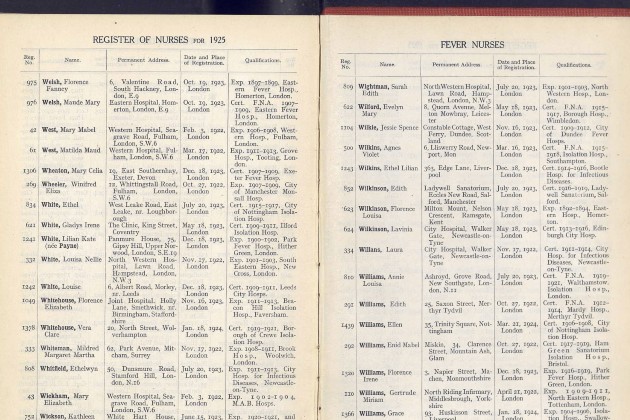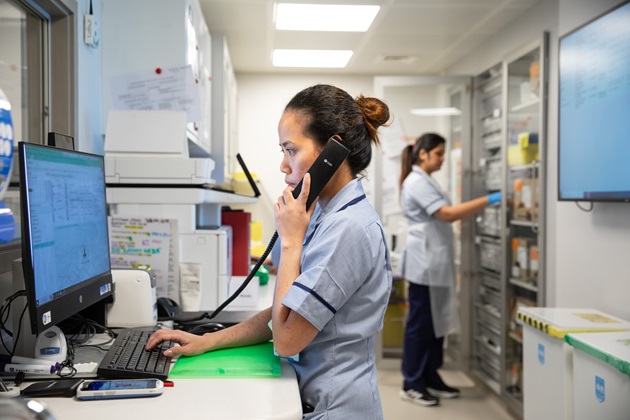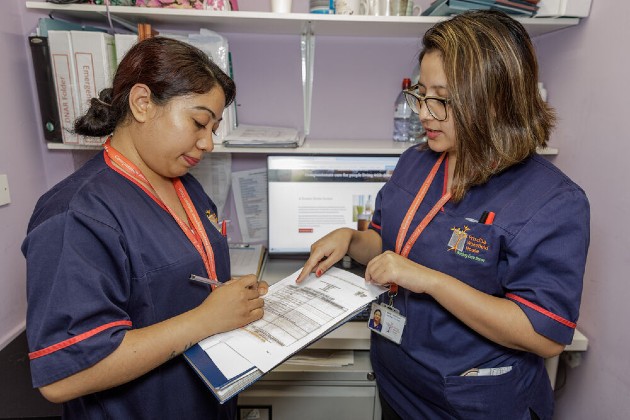Completing Nursing and Midwifery Council (NMC) registration forms is something many nursing staff take for granted in 2021, but 100 years ago it was something the RCN had to campaign for.
State registration of nurses was one of the first RCN campaigns. In December 1919, Nurses Registration Acts were passed for England and Wales, Scotland, and Ireland with registration for nurses opening on 30 September 1921.
Three separate General Nursing Councils (GNCs) were established – one for England and Wales, one for Scotland, and one for Ireland. Each was responsible for maintaining a register of nurses, approving training schools and setting examinations.
Qualified nurses had to pay a fee to be on the register which was published annually from 1922 until the late 1940s, thereafter quarterly.
Existing nurses had until 1923 to join the register and until 1943 only nurses who had completed a recognised course of training were permitted to join.
However, with the Nurses Act 1943, which made registration a legal requirement, nurses who could produce a certificate that they had completed a course of training before the beginning of July 1925 were given one last opportunity to register.
The registers were divided. The general register was reserved for female nurses, with supplementary parts for fever nurses, male nurses, mental and sick children's nurses.
Searching for a nursing ancestor
The RCN has worked with genealogy company Ancestry to digitise our collection of the General Nursing Council’s Nursing Registers 1921–1968 and the Scotland Nursing Applications 1921–1945.
We offer a searching service of the records we’ve digitised and that are available online through ancestry.co.uk. That’s more than 1.5 million nurses who trained and worked in the UK and Ireland between 1921 and 1968.
Liz Pinel looks after the RCN’s search for a nursing ancestor service, and says it's popular with the public.
“Enquiry numbers rocketed last year during the first lockdown. People were looking for where their ancestors worked and what kind of role they had,” she says.
“We probably can’t find everything you want to know about your ancestors. But we can confirm if they’re on the register as a state registered nurse.”
Liz says it’s worth remembering that even if you can’t find your ancestor on the register, they may still have been a nurse.
“Those who took casual work or short contracts probably didn’t have to worry much about being caught for not being registered. They wouldn’t have been paid very much and probably a lot of them didn’t want to pay to be registered. There wasn’t any difference in fees regardless of whether you were fully qualified, an assistant nurse or a state enrolled nurses.”
The information provided in the registers varies over time, but includes the nurse’s name, their maiden name where appropriate, and their registration date and number. Sometimes, you can also see their home address, the place and date of their qualification and other personal details.
Enquiry numbers rocketed last year during the first lockdown
Liz says the registers are revealing new details all the time. “We’re still finding out new things and this was demonstrated in the BBC programme Our NHS: A Hidden History, which we helped with,” she says.
“We were surprised when 15 out of 30 nurses from Barbados were on the register. We had always thought that the state enrolled nurse route was generally encouraged for nurses from abroad.”
If you have an Ancestry account, visit our partner page to search the records.
If you don’t have an Ancestry account, complete a family history search service request form. Each search costs £20 if you're not a member of the RCN.
10 things to remember when you search for a nurse
- They could have used a different name, such as a second name or nickname. For example, 'May' instead of 'Martha' or 'Nan' instead of 'Ann'.
- Their name may have been entered or indexed incorrectly on the register.
- The nurse could have been a state enrolled nurse (SEN).
- They could have been a Queens Nursing Institute (QNI) nurse – working on the district or in the community.
- They may have been a midwife.
- Double-barrelled names and married names often cause confusion.
- During the occupation in Jersey, nurses had an enforced separation from the GNC and although they continued training, they were only allowed to join again in 1946.
- While the 1943 Act made it compulsory for practising nurses to register, it wasn’t easily enforced and many nurses didn’t register.
- If the nurse only worked in wartime, they may be registered with organisations such as the British Red Cross, Queen Alexandra’s Imperial Military Nursing Service (QAIMNS), Queen Alexandra’s Royal Naval Nursing Service (QARNNS), or The Territorial Force Nursing Service.
- More hospitals and Royal Colleges are starting to digitise their records so bear this in mind when you are searching.
Other places to search for a nurse
These aren’t part of our records, but you may find these options helpful for your own research:
- Queens Nursing Institute (QNI) – these feature district nurses and, like the nursing registers, have been digitised onto Ancestry.
- The National Archives – particularly useful for military nursing records.
- Royal Medico-Psychological Association (1891–1951) – trained and registered Mental Nurses or Attendants. They are now the Royal College of Psychiatrists.
Royal British Nurse’s Association (RBNA) (1887–1966) – kept the first list of qualified nurses. There are 10,000 nurses on this list held at King’s College London Archive and now also available online as transcriptions of entries. - Scarlet Finders – a resource for nurses and nursing during World War One.
- The British Red Cross – you can find records of voluntary aid detachments here.
- Queen Alexandra’s Imperial Military Nursing Service (QAIMNS) – early 1900s military nursing.
- The Nursing and Midwifery Council (NMC) – you can now search for more recent nurses registered with the NMC.
Further information
- Watch Our NHS: A Hidden History on the BBC website.








